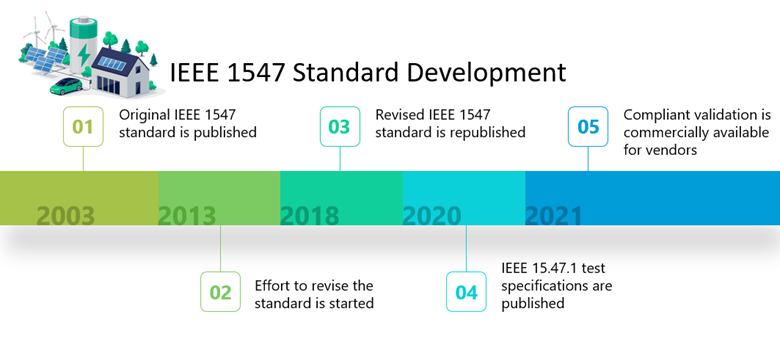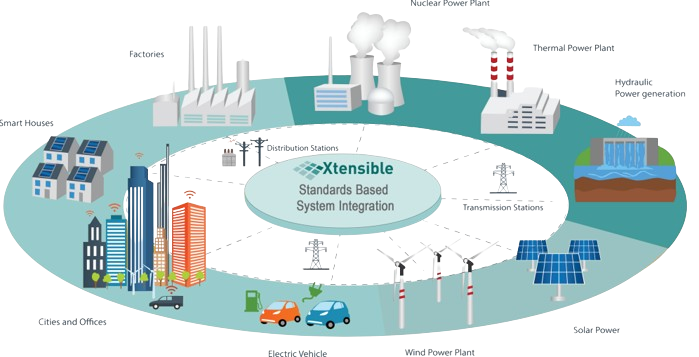The Worst Way to Implement DER
IEEE 1547 standard for interconnection and interoperability of distributed energy resources (DER), was ratified in 2018. It is now 2024. Obviously, with the adoption of this standard, utilities and DER integrators are having an easy time installing and setting up DER for the multiple ways that these devices can be controlled, which in turn, increase the hosting capacity on circuits, and ease the transition of utilities as they try to meet renewable energy goals.

But the situation we see on the ground? Not so much.
Utilities always knew as DER installations increased, they (or their third-party aggregators) were going to need to manage a variety of makes, models, and firmware versions of DER controllers. This problem is only exacerbated as DER life has increased beyond 20 years. However difficult the management of this situation is, the IEEE 1547 standard eases this management problem. Regardless of the make, model, or firmware version that the DER controller uses, by complying with the data integration specified in IEEE 1547, this level-sets these challenges by providing a unified and predictable interface for control. Again, on the ground, not so much.
Who is pushing the DER vendors to adopt IEEE 1547? Almost no one.
Surely the regulatory community, with their desire to increase renewable energy adoption, and various stated goals of being “net zero” at some point x in the future would be making this push? Perhaps the commission staff understands the connection between standards adoption and facilitating new capabilities, but do the commissioners? Maybe – but when different interests interfere with the outcomes seen on the ground – not so much.
How about the installers and aggregators? The installers are trying to get to the shortest path to a sale. Period. If the utility only has a net metering program available, that is the resource that is going to be sold and installed. The communication to the DER and the capabilities of it are not really their problem outside of ensuring proper safe operation. The utilities need the data acquired during the inspection of the installed DER, to both approve the addition for net metering purposes, and to know what capabilities the DER supports. But if the DER is not IEEE 1547, the mechanism for getting that data is a hodge-podge of screen shots, or, a comma-delimited file of what the vendor offers, in whatever ordering, naming, or data types that they choose. Thus, utilities are stuck with the age-old problem of converting images to data and/or transposing and mapping data from inbound files into a format they can support.
But surely the utilities can offer programs beyond net metering? On the ground, not so much.
If utilities cannot get the installation of a DER management system (DERMS) justified (either through a standalone vendor of DERMS capability as part of their advanced distribution management system (ADMS) – then they will not have the ability to directly manage DER installed in their territory. The application to determine if DER can be installed on a circuit will be dependent on a calculation of how much DER a circuit can support (hosting capacity). Without the ability to control the DER, the hosting capacity will necessarily be a lower amount.
Utilities also need to be concerned with how they are going to communicate with the DER. Without direct communication, again, there is a limit to how much DER can be installed on a circuit. Without communications, there is limited ability to take advantage of all the capabilities that a DER might provide – such as generating Vars and not just watts. Utilities may be able to leverage existing telecommunications networks in their territory such as SCADA (for example, if DER is installed at or near a SCADA-enabled substation), or the advanced metering infrastructure (AMI) network, assuming the AMI network has the bandwidth and coverage to support the additional data load that the command and control of DER might require (powerline carrier [PLC] and mesh networks may have limits), or if the cost is justifiable, the public/private cellular network.

If this sounds like a mess, it is because it is.
But it is not a new mess. This sort of mess is the same sort of challenge that utilities have dealt with for decades in their enterprise systems. It was not until we started seeing the widespread adoption of standards such as the utility Common Information Model (CIM) that the burden of system integration and data model management started being alleviated.
How did utilities get there?
One project at a time.
When utilities began to realize (after one painful system upgrade after another) that the best way to manage risk and future-proof their systems integration was to take a standards-based approach, that is when things began to change for the better. But you do not take a “boil the ocean approach” to standards adoption, you take these things on one project at a time, giving your staff an opportunity to grow and mature their integration skillsets and maturity.
When it is suitable, take time for a standards-based approach. Borrowing from the old proverb that the best time to plant a tree was 25 years ago, the second-best time is today. If your utility has already learned its lesson with enterprise integration and is using the CIM – you already get it. If not, well, it is not too late to start. These same lessons can be applied to DER and the use of IEEE 1547.
Utilities already need to work with and exchange data via applications for installations occurring today. To begin preparing for an IEEE 1547 standards-based future, utilities can begin by having systems that accept IEEE 1547-based data formats. Start by changing the systems you control, even if you do not have a DERMS, you have systems that rely on this data like Asset Management, DMS, or Work Management systems. Start there. Then begin working with your third-party installers and aggregators to get them on an IEEE 1547 footing. The best way to get the settings and capabilities is directly from the DER itself – if the utility is working with vendors for utility-owned solar, start there. The DER vendors are not unaware of IEEE 1574. In fact, in some places its use is mandatory. Make IEEE 1547 compliance part of your next RFP. And then stick to your strategy. If you hold firm, vendors will move.
Contact the Xtensible team so you to start a standards-based approach and develop a strategic roadmap for systems integration, Xtensible stands ready to help. We have over 25 years’ experience in management consulting and assisting utilities globally with standards adoption and data integration needs.
Back To Blog




